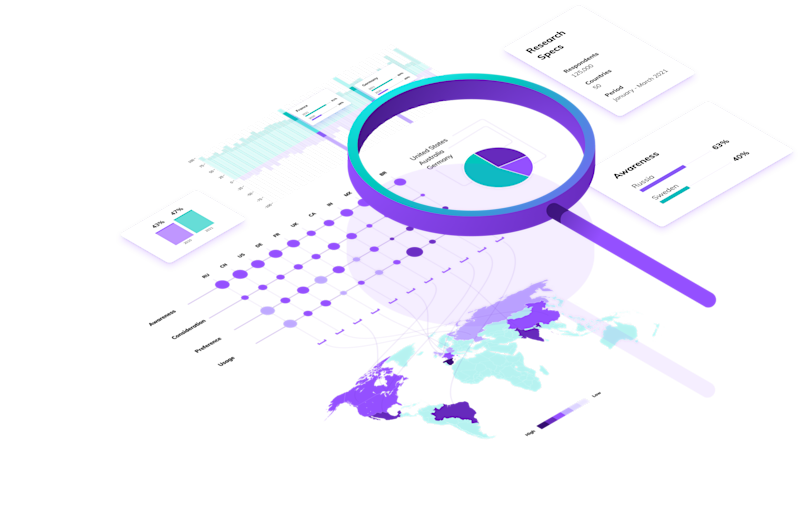In the rapidly evolving world of brand marketing, understanding and measuring brand perception is a significant challenge. Brand marketers frequently grapple with questions about the effectiveness of their current tools and methodologies. Why is brand perception so difficult to measure? Why do expensive solutions often fail to deliver reliable insights?
In this interview, Nico Jaspers, CEO of Latana, delves into these critical issues. He explores the common pitfalls of traditional brand tracking methods and highlights innovative solutions that can provide marketers with the actionable insights they need.
Brand Marketers: Why is measuring brand perception so difficult?
Nico Jaspers, CEO of Latana: Measuring brand perception is inherently challenging due to the complexity and scale of data required. Consumer brands typically invest six to seven-digit figures in brand tracking solutions to understand how their brand is perceived and how this perception changes over time.
However, our recent study among marketers highlighted several issues with current brand tracking solutions. We found that marketers often find this data unreliable, especially for niche audiences, and feel that the insights provided are inadequate and the solutions too expensive.
BM: How is it that marketers get so little value out of such expensive solutions?
NJ: The core issue lies in reaching enough people for research. Current data collection methods are not well-suited for accurately tracking brand perception.
To illustrate, let's consider a scenario. Imagine the Chinese EV brand BYD wants to understand how people in Germany perceive it compared to 19 other leading EV manufacturers, across five dimensions of perception, segmented by five different audience types and demographics. This means BYD needs to ask 110 questions to a sample of 2,000 people per month to get reliable segmentation.
On an annual basis, BYD needs to ask each of the 24,000 respondents in Germany 110 questions. The challenge magnifies when multiple brands require similar insights. If all 19 EV brands conduct similar research, they need a pool of respondents of nearly half a million to avoid survey fatigue and bias.
BM: That sounds like a massive undertaking. Can you explain why this is problematic?
NJ: If we go by the reported numbers of leading online panels, about 1% of a country’s population is typically registered in online panels but only a fraction of those regular users participate in research regularly. The numbers differ by type of panel and country but typically range between 10% and 50% of registered users.
So in a country like the US, reaching enough people for brand research on numerous brands across different categories is doable. But in most smaller countries, there simply aren’t enough people registered on online panels to conduct high-quality research.
BM: How does this scarcity of respondents impact the quality of data?
NJ: To motivate participation, research panels often offer incentives like cash payments or gift cards. However, this leads to significant issues like fraud. Industry experts estimate that there are currently over 2,000 businesses globally specializing in survey fraud, often using bots to automatically answer surveys. According to research conducted by industry experts, it’s estimated that up to 40% of survey answers in the current online sampling market could be fraudulent.
Even without fraud, the repetitiveness and length of brand surveys can lead to poor data quality. Respondents may rush through surveys, providing inconsistent or random answers just to receive their reward.
BM: What other challenges do you see with data collection currently?
NJ: One big challenge is agreement bias, where respondents give socially desirable answers instead of honest ones. For example, they might claim to know and consider buying a brand they have never heard of simply because they think it’s the "right" answer.
Also, small sample sizes are particularly problematic for reliable segmentation. If a brand wants to track purchase consideration among a niche audience, like high-income surfers, the sample size might be too small to draw meaningful conclusions. Even slight changes in respondent numbers can falsely suggest significant shifts in perception or behaviour.
Additionally, high-quality survey research is expensive. The costs per interview can range from $2 to $10, depending on the survey setup and target audience. With a requirement of 10,000 to 20,000 interviews per year for reliable data, the cost for data collection alone can exceed $100,000 annually for just one market.
BM: So, what is the solution to these challenges?
NJ: At Latana, we've developed innovative methodologies to address these challenges head-on. We leverage ad-based sampling to access a vast and diverse audience of casual respondents who are motivated by the desire to share their opinions, rather than by monetary incentives. This approach significantly reduces the risk of fraud and improves data quality by engaging genuine respondents.
Our technology ensures that we gather reliable, real-time data from a broad cross-section of the population, avoiding the pitfalls of traditional panels. By doing so, we provide marketers with accurate, actionable insights that are both cost-effective and efficient. Latana is dedicated to transforming brand tracking by offering solutions that meet the needs of modern marketers, making brand measurement more accessible and insightful.


![Team analysing data [cover image]](http://images.ctfassets.net/7so8go2zrvbw/6ySXgE5l1tzVjVB4LiMUSN/b541043b4f7201e95b962896b4fe47b6/Blog_SEO-Thumbnail_1000X709.png?w=800&h=567&q=95&fm=png)




